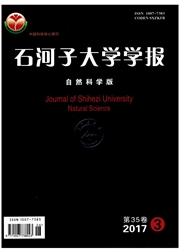

 中文摘要:
中文摘要:
绿当量核算方法为评价土地利用生态效益提供了统一性标准,实现了不同用地之间生态功能的定量分析和模型计算,可为土地利用优化提供生态化解决方案。运用生态系统理论及生态绿当量方法,设计干旱区土地覆被类型的生态功能评分标准,测算土地利用类型变化的当量分值,同时评估生态绿当量的理想状态。结果表明:(1)2000—2010年间,玛纳斯河流域绿当量比率均小于1,土地利用的生态效益趋于降低,需增加4873.3km2当量面积才能使绿当量比率达到1的标准值。(2)上游山区当量面积小但绿当量较大,应以保护和修复现有覆盖的生态功能为主;中游绿洲城市区应以增加城市绿地面积和景观功能为主;中下游绿洲农区是当量面积最大、绿当量值最小的核心,需通过土地整理和修复,重建生态功能。因此可知,生态绿当量模型对于干旱区土地利用优化具有一定的实用性,特别适用于探讨时空尺度的土地利用结构优化及调整问题。
 英文摘要:
英文摘要:
Green equivalent calculation method provides a unified standard for evaluating the ecological benefits of land use, achieving quantitative analysis and model calculation for the ecological function of different land use,which can provide ecological solution for land use optimization.Using the theory of ecological system and ecological green equivalent method,the ecological function of land cover types in arid area was designed, and the equivalent value of land use types was calculated in this paper.At the same time,the ideal state of the ecological green equivalent was also assessed.The results revealed the following aspects.Firstly,the green equivalent ratio was less than 1 in Manas River Basin in 2000-2010.Ecological benefits of land use tended to decrease,and the need to increase 4873.3 km2equivalent areas to make the green equivalent ratio reach the 1 of standard value; Secondly,the equivalent area of the upstream mountain was small but the green equivalent was relatively large,and the ecological function of the protection and restoration of the existing cover should be mainly concerned.Middle reaches of the oasis city should be increased by urban green space and landscape function.Midstream and downstream of the oasis agricultural district was the core area,where the equivalent area was the largest but the green equivalent was relatively the smallest.The ecological function will be needed to reconstruct by the way of land consolidation and rehabilitation.The ecological green equivalent model for arid land use optimization has a certain practicality for arid land use optimization ,especially for the optimization of land use structure and adjustment problems in spatial and temporal scale.
 同期刊论文项目
同期刊论文项目
 同项目期刊论文
同项目期刊论文
 期刊信息
期刊信息
